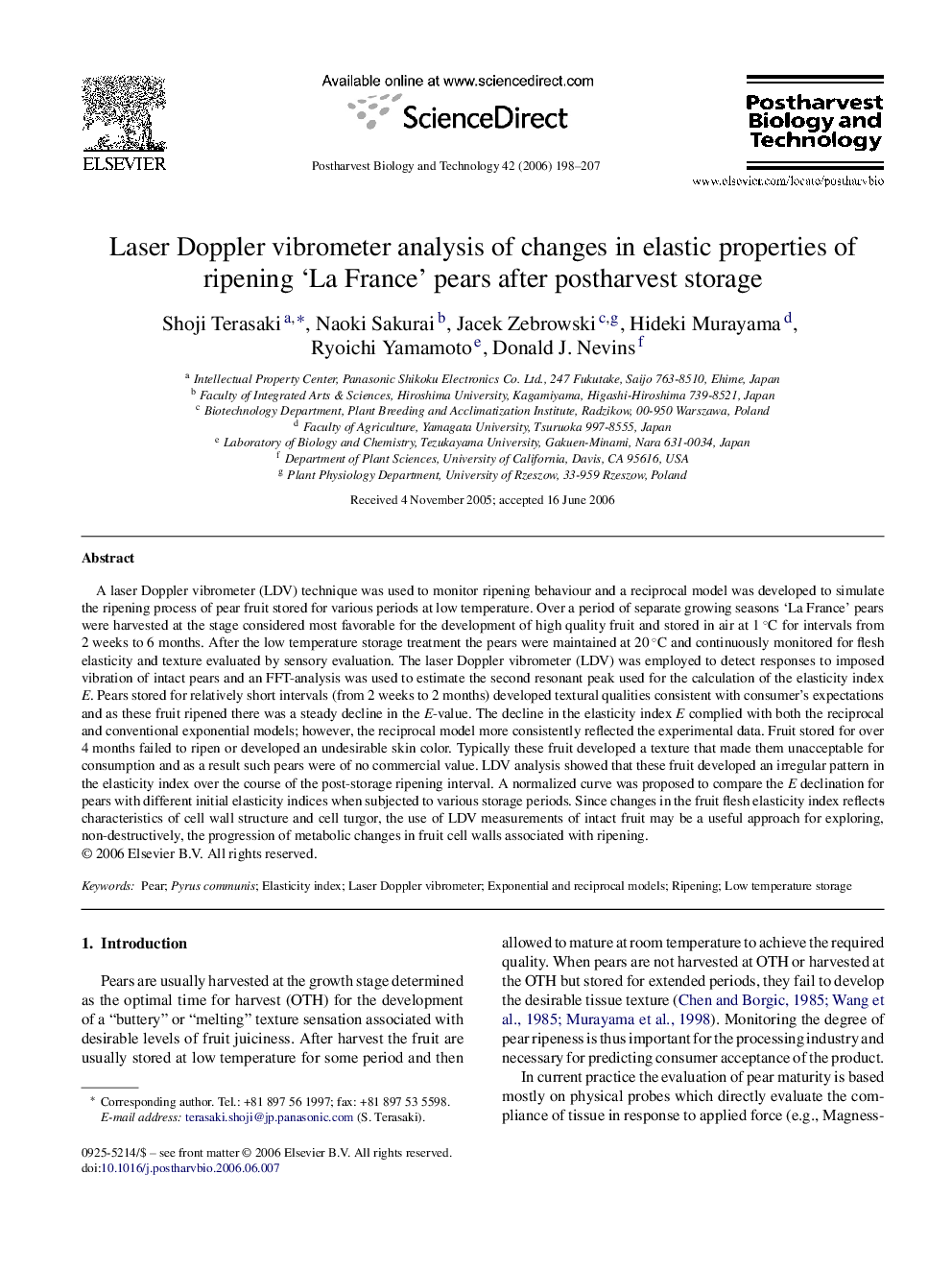| Article ID | Journal | Published Year | Pages | File Type |
|---|---|---|---|---|
| 4519876 | Postharvest Biology and Technology | 2006 | 10 Pages |
A laser Doppler vibrometer (LDV) technique was used to monitor ripening behaviour and a reciprocal model was developed to simulate the ripening process of pear fruit stored for various periods at low temperature. Over a period of separate growing seasons ‘La France’ pears were harvested at the stage considered most favorable for the development of high quality fruit and stored in air at 1 °C for intervals from 2 weeks to 6 months. After the low temperature storage treatment the pears were maintained at 20 °C and continuously monitored for flesh elasticity and texture evaluated by sensory evaluation. The laser Doppler vibrometer (LDV) was employed to detect responses to imposed vibration of intact pears and an FFT-analysis was used to estimate the second resonant peak used for the calculation of the elasticity index E. Pears stored for relatively short intervals (from 2 weeks to 2 months) developed textural qualities consistent with consumer's expectations and as these fruit ripened there was a steady decline in the E-value. The decline in the elasticity index E complied with both the reciprocal and conventional exponential models; however, the reciprocal model more consistently reflected the experimental data. Fruit stored for over 4 months failed to ripen or developed an undesirable skin color. Typically these fruit developed a texture that made them unacceptable for consumption and as a result such pears were of no commercial value. LDV analysis showed that these fruit developed an irregular pattern in the elasticity index over the course of the post-storage ripening interval. A normalized curve was proposed to compare the E declination for pears with different initial elasticity indices when subjected to various storage periods. Since changes in the fruit flesh elasticity index reflects characteristics of cell wall structure and cell turgor, the use of LDV measurements of intact fruit may be a useful approach for exploring, non-destructively, the progression of metabolic changes in fruit cell walls associated with ripening.
